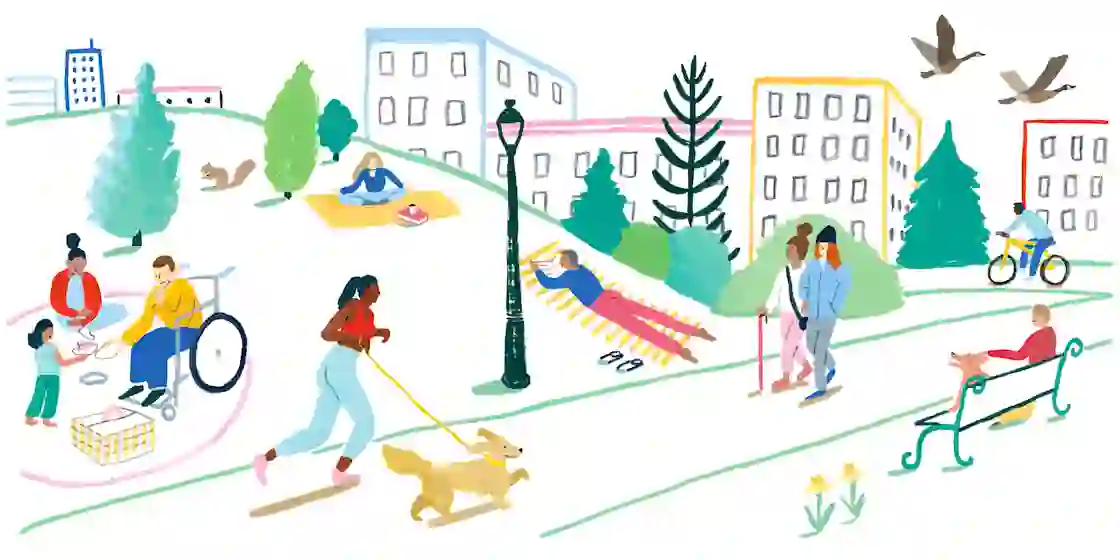Boost Your Balance and Flexibility by the End of This Month
Join our #ASWarrior for stretches and moves to counteract all the hunching and slouching.
你做到了到第三周,工作很好!本周,我们将在您的曲目中增加一些伸展运动和平衡练习。如果您刚刚加入我们,请欢迎您 - 简单地单击返回第1周of this challenge to learn how to get started.
这似乎是违反直觉的,但是当涉及到良好的情况下强直性脊柱炎(AS)和其他形式的炎症性关节炎,您想移动更多而不是更少。这是您梦dream以求的大教练瑞典斯德哥尔摩的埃琳娜·博伊德(Elina Boyd),可以确认是真的。正如一种慢性炎性关节炎的一种形式,它主要在脊柱中引起炎症,僵硬和疼痛,尽管它也会影响体内其他关节。37岁的博伊德(Boyd)说:“如果我不以某种形式移动身体,我将无法度过一天。”如果她耀眼或过着特别痛苦的一天,这种运动看起来有所不同,但是在那些艰难的日子里,她只是尽力而为,专注于核心力量和伸展运动。
Maintaining your balance and flexibility are important for a few reasons, says Wai-Kwong Hui, a doctor of physical therapy at the Hospital for Special Surgery in New York City and your other coach on this goal. First, when you have inflammatory arthritis, your joints can get stiff. “Once you stop moving, you’re creating rust. That’s going to make it harder to move,” notes Hui. As the old saying goes, “motion is lotion,” he adds. Second, the pain and stiffness caused by these conditions tends to lead people to alter their movement patterns and move in ways that limit balance and mobility. Improving these skills requires working on them often—every day if possible, even if it’s just for a few minutes at a time—by doing exercises that challenge your body. Luckily, we’ve got the moves that will do the trick.
第3周:将平衡和灵活性移动到每天
本周,除了我们每天的五到10分钟的有意锻炼(包括核心工作)外,我们还将全天添加一小部分目标平衡和灵活性工作。
Hui recommends stretching in small amounts throughout the day, which has the added benefit of building in movement breaks. “If you’re sitting at a desk a lot, getting up and moving and stretching what’s tight is a great thing to do to change your position,” Hui says. Sitting in one position all day long contributes to stiffness and reinforces bad posture, so the more you can stand up and reset, however briefly, the better.
第3周培训计划
So, here are your marching orders: Try the stretches and balance moves described here for two to three minutes three to five times a day. Set a timer on your phone for regular intervals throughout the day. Each time, just do one or two simple stretches—that’s it. By the end of the day, you’ll have done up to 10 moves that day without it requiring a major time commitment before or after work.
伸展尝试
HUI建议拉伸感觉特别紧绷的身体部位 - 非常可能,脊柱,肩膀和颈部的不同区域,尽管下半身也可以导致整体僵硬和不适感,并保持每次伸展30至60秒肌肉和肌腱的拉伸反应。他补充说:“您可以在更长的时间内努力工作,以真正感觉到这段时间随着时间的流逝。”他推荐一些伸展运动:
Upright Posture Against Wall:Stand with your back against a wall. Try to get your heels, buttocks and back against the wall if possible. Squeeze your buttocks together and your shoulder blades together. Perform a slight chin tuck. Think about elongating your body from your feet to the top of your head (that is the goal). Try to hold this upright position for 15 to 30 seconds and gradually work your way up to a longer duration (two to three minutes of proper upright standing). Repeat three to four times.
座位扩展:坐在椅子上时,将脚平放在地板上。将指尖围在两侧的耳朵周围。稍微向前倾斜,因此您的背部不再完全放在椅子上。考虑一下将肘部带回去,然后轻轻地将肩blade骨挤在一起。当您这样做时,应该会拉长您的姿势,这样您就不再懒散了。确保将脚放在地板上。深吸一口气,感觉到您的胸腔(又名上部)脊柱伸展一点。保持这个位置五秒钟,然后慢慢呼吸。重复五到10次。
Shoulder Shrug:Stand with your hands to your side and thumbs pointing forward. Shrug your shoulders up and hold for three to five seconds. While your shoulder is shrugged, turn your palms outward, squeeze your shoulder blades together, and hold three to five seconds. While squeezing your shoulder blades together and your palm is turned outward, depress your shoulders down and hold for three to five seconds. Relax. Repeat three to five times.
Seated Knee Extension:坐在椅子的边缘。将一只脚滑到您的面前,将脚跟放在地板上。当您滑动脚跟时,将脚趾指向头部。轻轻收紧大腿肌肉。您可能会在腿后部和下背部感到伸展。将此拉伸持续30秒至60秒。每侧重复三次。
Side-Bend Stretch:尽可能宽的双腿站起来,保持膝盖稍微弯曲。一只手臂尽可能高高地伸向天花板,这样您就会感觉自己正在伸长。保持三到五秒。接下来,将那只手臂伸到另一侧,继续尝试像您一样向上伸手。将另一只手放在腿上或臀部以进行支撑。保持拉伸15至30秒。在另一侧重复。在每一侧做三次。
站立旋转:在站立的位置,将一个手臂向前伸到大约的肩高,然后沿相反方向到达另一只手臂。尽量向前伸到尽可能的前后。保持头部与身体保持一致。现在,将前臂向后臂移动,越过身体的中线。保持30秒。您应该觉得自己的胸椎正在旋转。将手臂返回中心。在另一侧重复。在每一侧做三次。
Balance Work to Try
So many everyday movements—getting up out of a chair, stepping on or off a curb, shifting your weight to one leg to catch something falling off the table—require balance. You can work on it by doing these simple types of movements during your stretch breaks, or by introducing balance challenges to your daily strength workouts. Here are a few things Hui recommends trying:
Sit-to-Stand:站在椅子前(背上座位)。坐在椅子上;站在椅子上。然后,用一条腿向前走。用同一条腿向后退一步。再次坐下。重复,这次与另一只腿走。“向前迈出这一一步是教您来回移动体重。这是平衡的。”“如果您被剥夺,只需要一些东西就可以努力,这是一件很棒的事情。” Repeat for a few minutes.
Balance Taps:与双脚隔开臀部宽度。举起你的权利?从地板上踩踏,然后向前,向右轻拍脚趾,然后向后向后。如果这是太多的挑战,请最初将其放在地板上并来回滑动。确保保持直立的姿势。继续几分钟。切换腿并重复,这次将左脚敲出向左侧。
You’re on your way to building a body that moves better. Next week, in the final installment of this yoga challenge, Hui and Boyd will show you how to keep up the progress and embrace your new move groove. Happy stretching!






